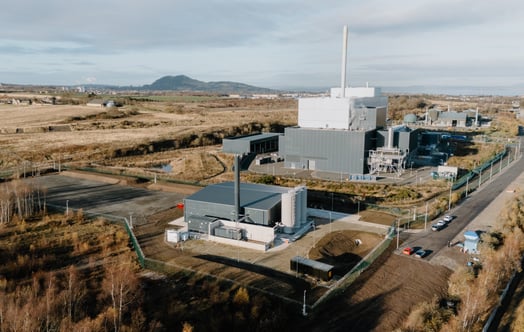
District heating is vital in the drive to decarbonise our building stock.
In order for the UK to meet zero carbon emissions by the 2050 deadline, we need to decarbonise heating. Heat accounts for almost half of the UK’s energy use1, and for around a third of greenhouse gas emissions2, so its significance cannot be understated.
A large scale roll out of district heating is a vital part of achieving this ambitious target. In many urban areas, it will likely be the most cost-effective way to decarbonise the heating of buildings, both for consumers and the country as a whole.
High density urban areas offer a number of complementary benefits to support district heating, such as a concentration of heat demand coupled with a diverse range of waste heat sources (e.g. as by-product from industrial processes) and heat rejection from commercial cooling needs. However we have to act now and with urgency to transform this potential into reality if we want to meet our net zero target.
The recent Vattenfall Heat UK roundtable highlighted this urgency, and outlined the importance of agreeing on and committing to a credible plan for decarbonising heat, and cross-industry collaboration to see it through to completion.
What is the ‘heating industry’ and do we want the same things?
Perhaps one of the reasons that a comprehensive and coordinated initiative to decarbonise heat has not arisen in the UK is the multitude of conflicting voices in the heating industry. There are a number of different interests within the heating industry, each largely concerned with their own respective interests.
The gas industry benefits from the ongoing undertaxing of gas relative to its carbon impact and advocates for the repurposing of the gas grid for hydrogen. Individual system providers (e.g. heat pump industry) want to promote building by building (or apartment) scale systems. The district heating market in turn is largely concerned with support of heat networks and are not concerned with other options that are available. We say that each of these industries and technologies have an important role to play in meeting our carbon targets – the challenge is choosing the right technology for the right location and building type.
The need for local approaches to heat decarbonisation
The plan to decarbonise heat needs to be local to the area being considered to take into account the specific resources available in one area that may not be present in another.
For example, a rural area with abundant renewable energy resources (such as wind and sun) and more properties off the gas grid could pursue a strategy of heat electrification primarily on a building by building basis. A large city, on the other hand, might rely on heat networks served by heat from energy-from-waste facilities, industrial waste heat and large heat pumps.
Each region of the UK has its own resource landscape, and it simply does not make sense to introduce a ‘one-size-fits-all’ solution. All planning should consider these resources, and how they can be shared, if required.
Certainty will help unlock investment
A plan in a defined area with defined goals, objectives and requirements for the affected stakeholders creates certainty. This certainty is good for consumers, building owners, investors, the heating industry and for the wider supply chain that supports it.
Creating this certainty is key to minimising the cost of rolling out decarbonising technologies such as district heating, and is crucial to reaching net zero carbon by 2050 at least cost to the UK.
The Baringa Partners report ‘Heat Decarbonisation’ estimates that a heat strategy for the UK that establishes local planning or zoning which enables the right technology to be chosen for the right situation could reduce the cost of decarbonising heat by ~ £10 billion for the UK.
Increased certainty of connection reduces the risk of securing the required heat demand to make a heat network viable. This in turn will attract the investors who have to date been holding back from investing in heat networks at the much larger scale needed to decarbonise heat.
We believe the localised planning approach is the way to secure, affordable, low carbon heat, and, as one attendee from the Vattenfall Heat UK roundtable event agreed:
“The nature and location of the building matters just as much as the heat generation technology, and if we can coalesce around, ‘these are the things we can do, this is where it will work, this is how we’ll deliver it, and this is what’s potentially possible’ then I think we’re really on a tipping point, and I think 2020 is an exciting year for the market we’re in.”



